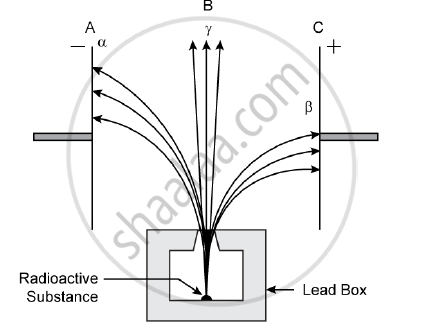Advertisements
Advertisements
प्रश्न
How can they be made to leave the metal surface? (State any two ways)
उत्तर
Electron emission from the metal surface can be (any two):
1) Thermionic emission – when energy is supplied as heat
2) Photoelectric emission – when energy is supplied as energy.
3) Field emission – when energy is supplied by applying an electric field to accelerate the electrons.
4) Secondary emission – when energy is supplied from the kinetic energy of other electrons on collisions with them.
APPEARS IN
संबंधित प्रश्न
When does the nucleus of an atom tend to become radioactive?
What is thermionic emission?
Radiations given out from a source when subjected to an electric field in a direction perpendicular to their path are shown below in the diagram. The arrows show the path of the radiation A, B and C. Answer the following questions in terms of A, B and C.

1) Name the radiation B which is unaffected by the electrostatic field.
2) Why does the radiation C deflect more than A?
3) Which among the three causes the least biological damage externally.
4) Name the radiation which is used in carbon dating.
Give the relative ionizing power of α, β and γ radiations.
A radioactive source emits three types of radiations. Name them.
(i) Name the radiations which are charged.
(ii) Name the radiations which are most penetrating.
(iii) Name the radiations which travel with the speed of light.
(iv) Name the radiations which have the largest mass.
Name two radioactive substances.
What are the types of emission?
Why are materials of low work function preferred as thermionic cathode materials?
Justify with reason, whether the following nuclear reactions are allowed or not.
\[\ce{^A_Z X -> ^A_{Z + 1}Y + ^0_{-1}β}\]
Mention one important function of ear main parts:
State the principle on which the functioning of a nuclear reactor is based.
